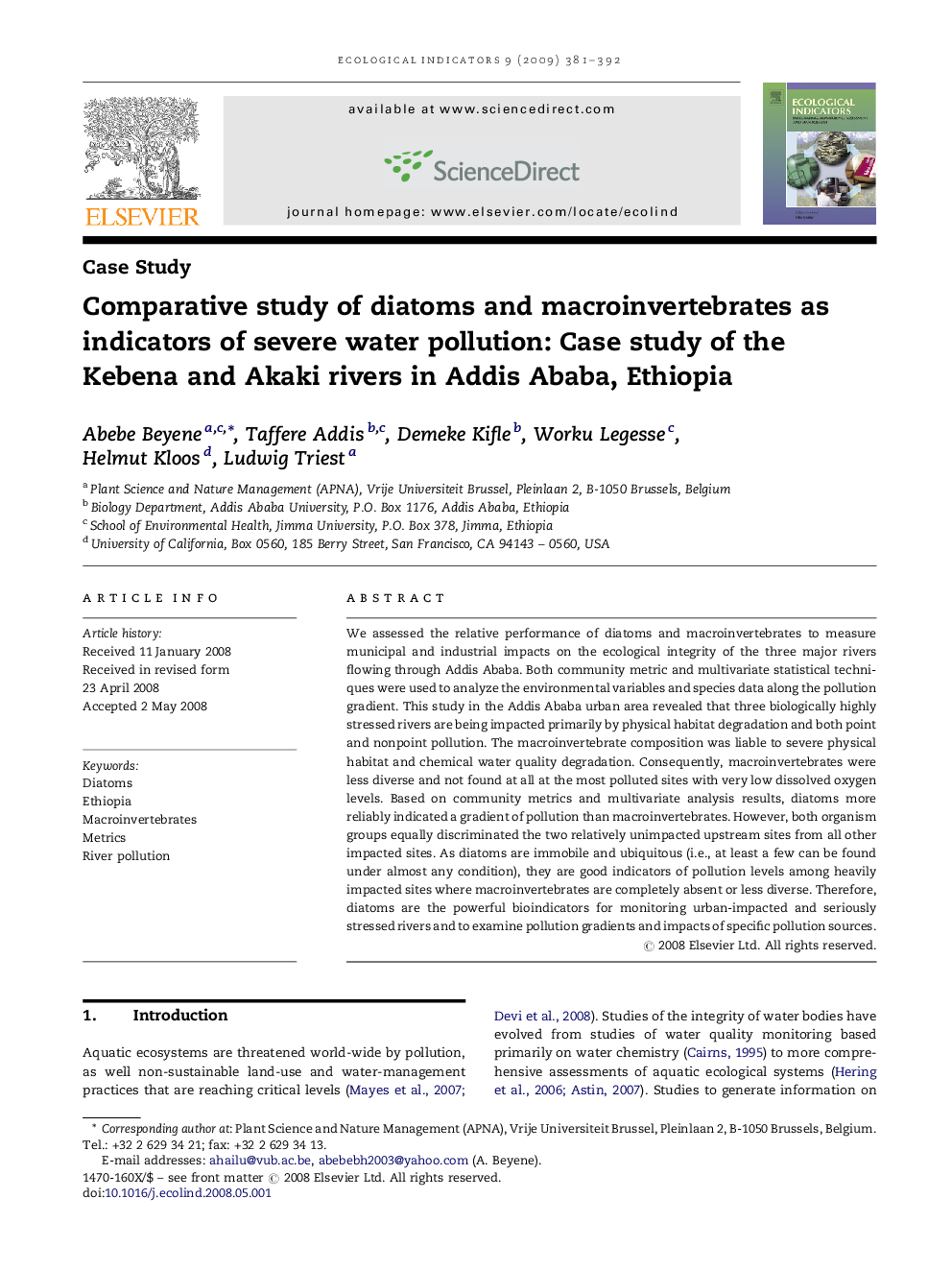| Article ID | Journal | Published Year | Pages | File Type |
|---|---|---|---|---|
| 4374456 | Ecological Indicators | 2009 | 12 Pages |
We assessed the relative performance of diatoms and macroinvertebrates to measure municipal and industrial impacts on the ecological integrity of the three major rivers flowing through Addis Ababa. Both community metric and multivariate statistical techniques were used to analyze the environmental variables and species data along the pollution gradient. This study in the Addis Ababa urban area revealed that three biologically highly stressed rivers are being impacted primarily by physical habitat degradation and both point and nonpoint pollution. The macroinvertebrate composition was liable to severe physical habitat and chemical water quality degradation. Consequently, macroinvertebrates were less diverse and not found at all at the most polluted sites with very low dissolved oxygen levels. Based on community metrics and multivariate analysis results, diatoms more reliably indicated a gradient of pollution than macroinvertebrates. However, both organism groups equally discriminated the two relatively unimpacted upstream sites from all other impacted sites. As diatoms are immobile and ubiquitous (i.e., at least a few can be found under almost any condition), they are good indicators of pollution levels among heavily impacted sites where macroinvertebrates are completely absent or less diverse. Therefore, diatoms are the powerful bioindicators for monitoring urban-impacted and seriously stressed rivers and to examine pollution gradients and impacts of specific pollution sources.
